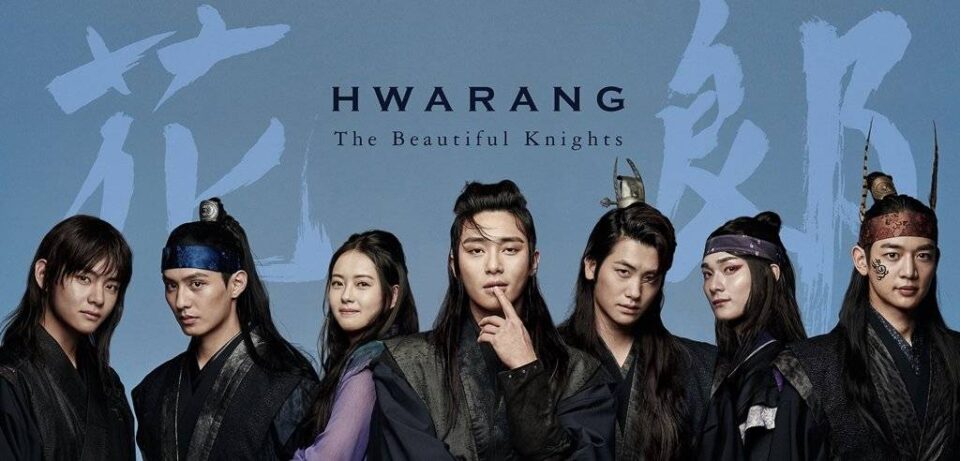Why ‘Hwarang’ Men Had to Look Good
The Hwarang men were archaic analogs of modern flower boys, or more specifically, metrosexual men who are fastidious about their appearance
Koreans have had a taste for beauty since ancient times, especially during the Silla dynasty. An Asia Society piece informs, certain academics have designated the period “flamboyant,” given Silla’s apparent obsession with makeup, clothes, and hairstyles. Its three central figures—Misil, Queen Seondeok, and the Hwarang—all exemplified beauty through their physical attributes, intellect, and an assortment of other virtues, with the Hwarang being the most intriguing of the three.
The Hwarang, sometimes referred to as “flowering knights,” are said to have been an elite band of valiant warriors during the Silla dynasty. Hwarang battalions of young, noble-lined Silla men were led by commanders. They were extremely handsome, following the Silla maxim that a beautiful body is the abode of a beautiful soul, and are credited with aiding Silla in seizing the Korean peninsula.
The Hwarang men were archaic analogs of modern flower boys, or more specifically, metrosexual men. Like the latter, who are fastidious about their appearance and often invest in shopping, the former had a record for taking great care of how they looked. The Hwarang men were also alleged to burn incense, generating a lovely smell while they went about their daring exploits. They wore stylish outfits and bead-trimmed headgear to add flair to their looks, particularly when in war.
When referring to the Hwarang, the word “Hyangdo” (fragrant ones) was also employed. The 2016 classic period drama series Hwarang: The Poet Warrior Youth (2016), which was based on these men, revived the flower-boy image with its engrossing tale of the Silla dynasty’s upheaval.
The drama features Jiso, Silla’s overly ambitious monarch, who devises a plan to create the Hwarang force in a bid to overthrow the affluent aristocracy, maintain her position of power, and safeguard her son. As the story develops, the Hwarang men discover their passion, brotherhood, and love without discovering that King Sammaek-jong (Park Hyung-sik), a group member, and commoner Moo-myung/Kim Sun-woo (Park Seo-joon) are both enamored by the same woman, Kim Ah-ro (Go Ara).
The Hwarang’s abilities and physical strength were heavily emphasized. The men sought out Buddhist monks seeking guidance in exchange for the same. The ruling class and nobility of the Silla kingdom followed Buddhism as their official religion at the time. Buddhist monks and their martial arts prowess were much admired by the Hwarang. They would often travel together and train in the highlands. And in addition to theological studies that focused on Buddhism, Confucianism, and Taoism, the Hwarang often dabbled in recreational pursuits like singing and dancing.
Some theories contend that the Hwarang were significantly influenced by shamanism. The Hwarang Warriors – Silla’s Flower Boys, a study by author Courtney Lazore, revealed that shamanism was the prevalent religion at the time the hwarang were created under King Chinhung. The two women from the Hwarang origin story—Nammo and Chunjong—are also thought to have performed religious duties comparable to those of shamans. It makes sense to assume that the Hwarang would have adopted shamanic practices since these two women and their adherents were thought to be the Hwarang organizations’ forebears.
One of the most essential roles of the Hwarang was to train young men in Silla’s ideals, spirituality, and methods of warfare. They were ostensibly gorgeous because Silla intended them to be crowd-pleasers, trusted figures, and revered administrators in society. Because the Hwarang groups had received lessons in cultural and social norms, military strategies, and religion, they appeared to be an effective means of fulfilling Silla’s goals. This could explain why the majority of Hwarang rose to prominence as leaders.
Consider Kim Yu-shin, a Korean military leader and statesman in Silla’s seventh century, who joined the Hwarang as a teenager, trained as a skilled swordsman, and subsequently became a Hwarang leader wielding complete authority over the Silla military. When Princess Deokman, a cousin of Kim Yu-shin, was crowned Queen Seondeok of Silla, his position as supreme commander of the royal army was retained. He amassed a thousand troops, triumphed in numerous conflicts, and rose to become one of Silla’s most powerful men. In the historical romantic action-drama Queen Seondeok (2009), snippets of the events are described.








